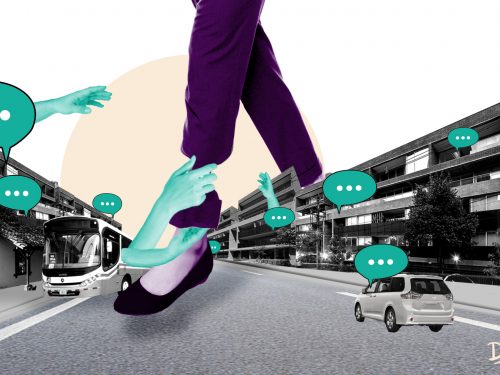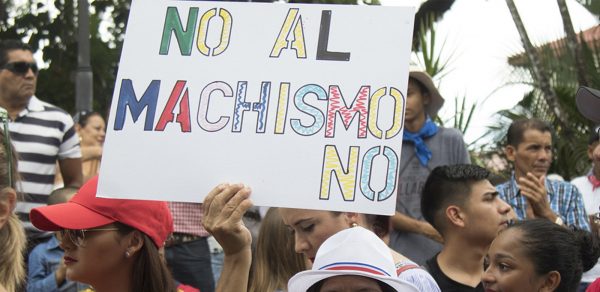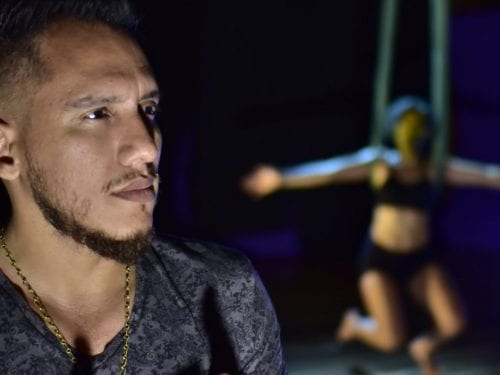
Sara walked with fear from the moment she left her house. She was on her way to high school to pick up some exams and her nightmare got worse when she arrived. Students of different levels screamed at her, hissed at her and threw two bags of water at her. Sara went to the park with a friend and cried for half-an-hour.
The night before, someone had created a fake profile on a website called Ask, a site where users can ask and answer anonymous questions. The fake account made pejorative comments about other kids in the school where Sara was studying.
On Facebook, several students held her responsible, saying that they had hacked the platform and saw her email associated with the account. But Sara says it wasn’t her.
They started to find intimidating and offensive messages on Facebook and Whatsapp. “I want to see that kid tomorrow.” “I wouldn’t want to be in her shoes. HAHAHA.” And they made offensive remarks about her body. “Who do you think you are, you dumb fatty?”
Sara says online harassment and bullying increased the anxiety, anorexia and bulimia she was already grappling with. Worse yet, several students realized that she suffered from these ailments. “I don’t know if they saw me in the bathroom one day and then started to call me bulimic and anorexic,” she says.
Her friend Aura also recalls that they would take photos of Sara and upload them to the web, making fun of her. The names Sara and Aura were made up for this article in order to protect their identities. The Voice spoke with both of them.
“Online violence is a reproduction of what we experience daily as women in the real world,” says systems engineer Rocío Jiménez, who works for Sulá Batsú, a cooperative that strengthens development in communities through technology.
Online, violence is magnified by the speed at which things travel and the number of people who can see a post. Additionally, in rural zones, — according to Jiménez — “what goes viral can affect victims even more because populations are small and everyone knows each other.
Sara, for example, thought about changing schools, but it didn’t make much sense. On one hand, there weren’t many options and on the other she knew that other high schools had found out about what was happening.
Many female adolescents like her also face cyberbullying and threats. In other cases, people extort them because they have intimate photos of them (sextortion) or share them for vengence’s sake (pornovengence). Adults pretend to be kids in order to get close to girls or adolescents and send them porn content.
Psychologist Katherine Chavarría who works in a clinic in Carrillo that tends to kids and adolescents says in some cases violence can push them to hurt themselves or even commit suicide because they feel guilty.
What is lacking, according to experts, is education.
“Young women don’t necessarily have the information they need to measure risks of sharing certain information,” says Mercedes Hidalgo, youth counselor for the Council for Young People in Santa Cruz.
Jiménez adds that it’s true that new generations are more familiar with technology, but says that doesn’t mean that they use it safely. “We uncovered and enlarged a series of challenges. We don’t talk about sexual education, much less sexual education in the age of the internet.”
Where to File a Complaint
Sara never knew who created the Ask account. In many cases, harassers hide behind fake accounts. “For the majority of people, anonymity is opening my own computer, opening a separate email and creating a separate Facebook account,” Jiménez said. She adds that it doesn’t mean that harassers are really in a hidden world. “It’s that identifying them is a very complicated process.”
The greatest challenge, she said, is that there are no specific laws for cyberbullying and online violence. “The law on information crimes is limited to protecting mainly companies from hacks,” she says. That’s why it sometimes seems like a hidden world.
The few registries the country has, are at the Public Education Ministry. This year, the institution has received 326 complaints, none of which were related to cyberbullying. Guanacaste has the lowest number of them at 10.
“There are more cases. We know that we are only looking at the tip of the iceberg,” says Rocío Solís, coordinator for the Comptroller of Student Rights.
There are some complaints in high schools. Sara’s mother spoke with the school’s principal seeking a solution. He and other teachers told the students to stop bullying.
In other cases, there are only rumors, according to Elvia García, orientation manager for Technical High School of Corralillo, in Nicoya.
“What usually happens in high schools, is the creation of memes making fun of someone and intimate photos of female students,” she says. Three months ago, what she calls “a wave” began.
A female student told her that intimate photos of several students were being sent around. The high school staff went classroom to classroom to speak to students. “We told them that it was important not to accept requests from strangers, that sharing photos can have negative consequences and that it’s better to erase photos when they receive them,” García said.
According to experts, behind each known case there are probably many more, and each case embarrasses and isolates girls.
Sara says she doesn’t even feel safe at home because they threatened to look for her. Despite the fear, Jiménez from Sulá Batsú suggests filing formal complaints with the MEP or the Investigative Police (OIJ) and saving as much evidence as possible.
Hidalgo, of CPJ in Santa Cruz, also thinks it’s necessary to make this a more visible problem. “For each girl that speaks, there are many more behind her who don’t. A girl who speaks up is raising her voice for her peers and that’s what we need to encourage.”






Comments